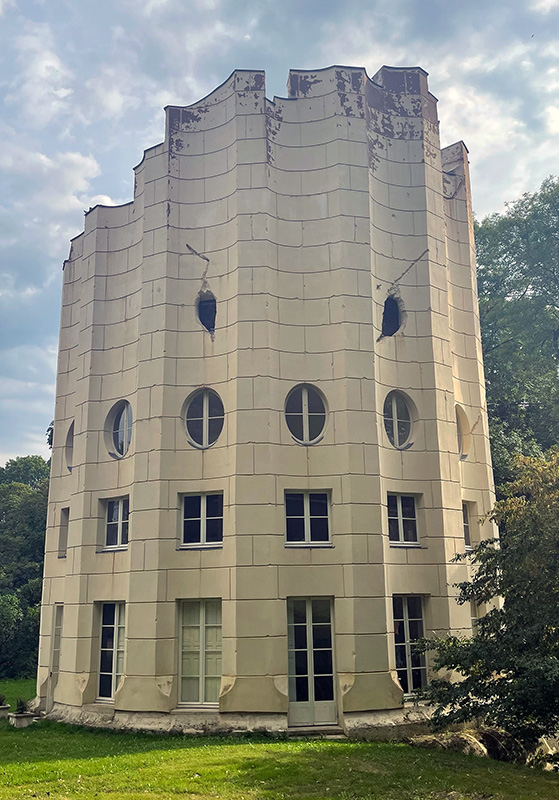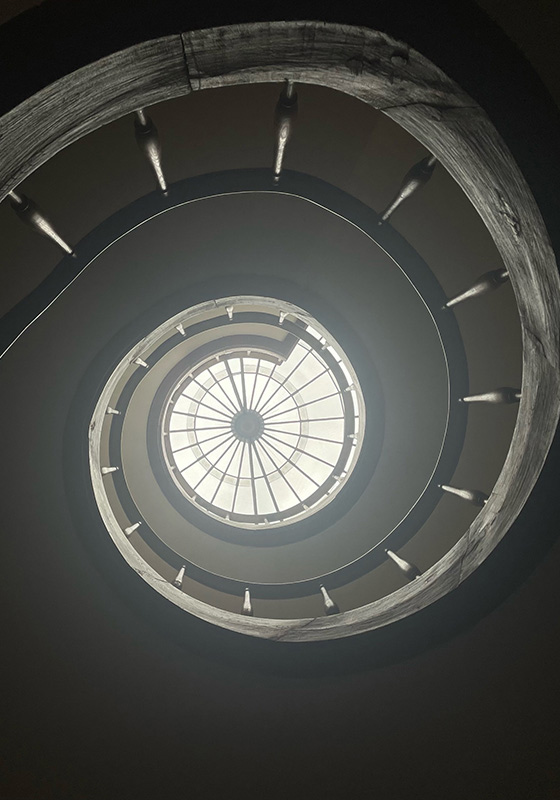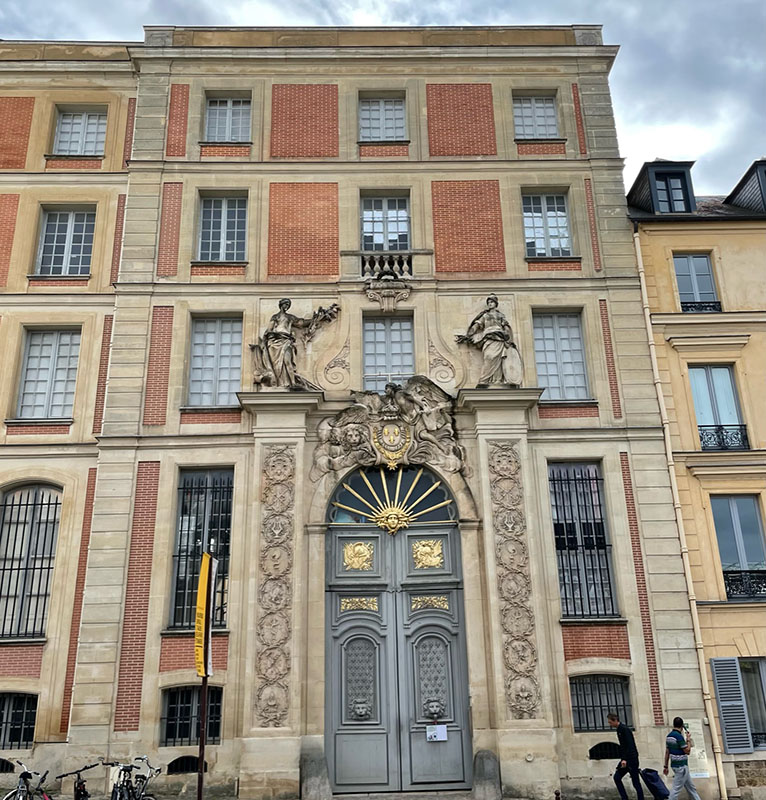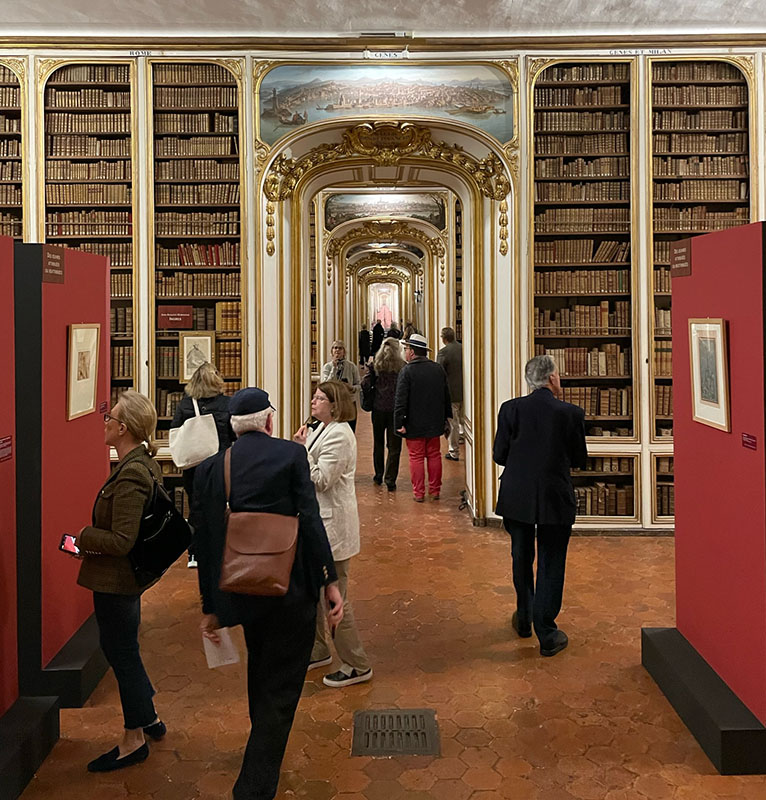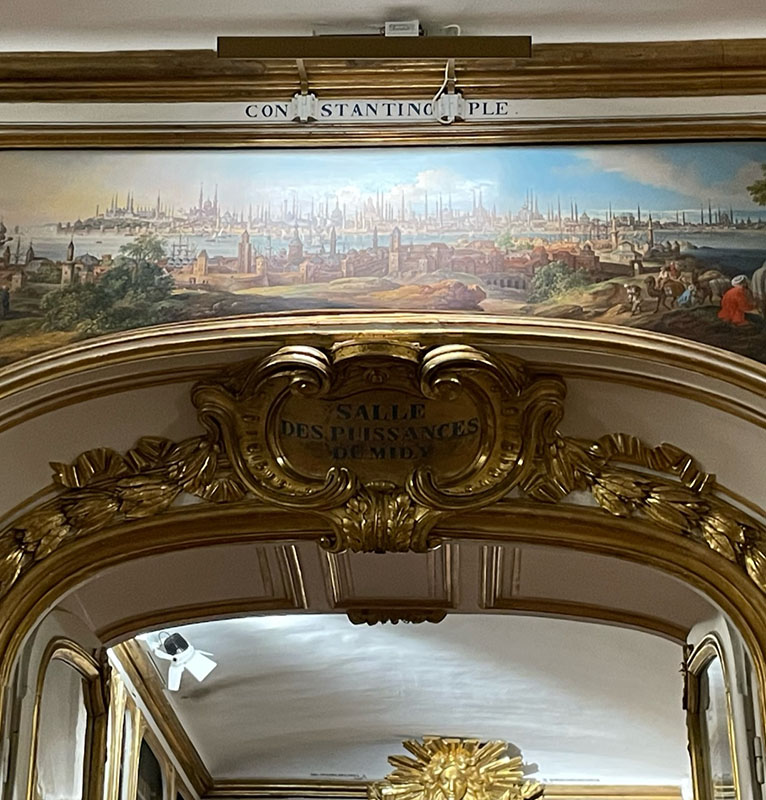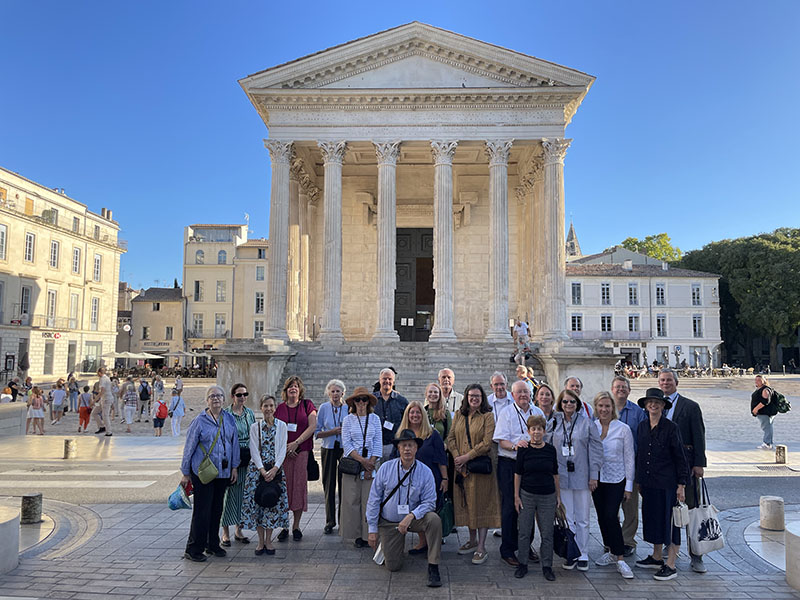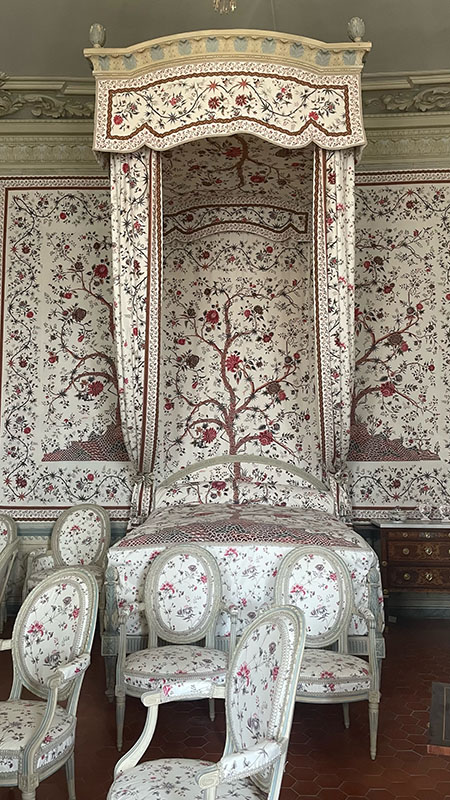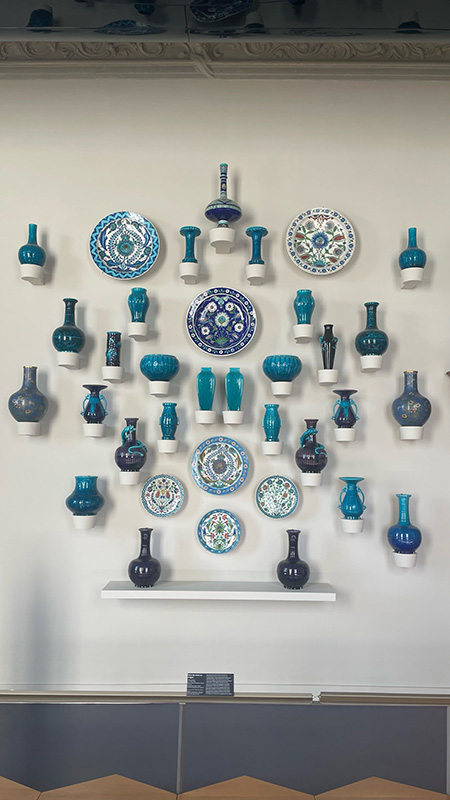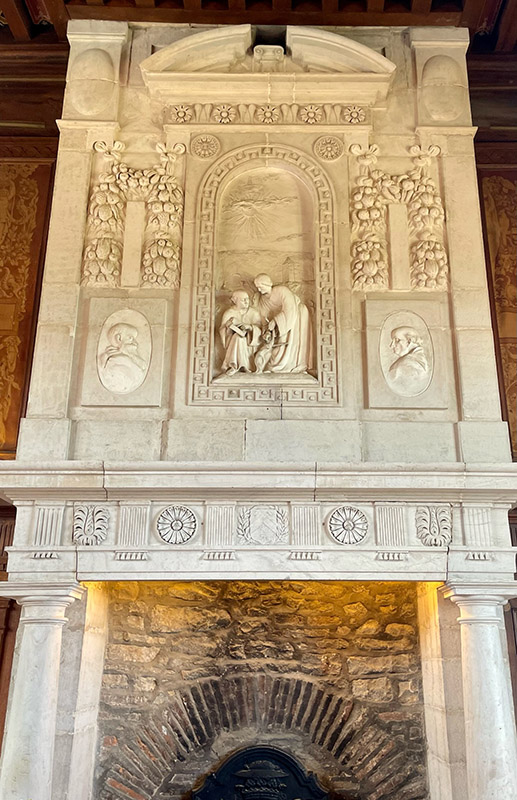Exploring Paris and Provence in the Footsteps of Thomas Jefferson
Decorative Arts Trust members had the chance to experience Thomas Jefferson’s design inspirations during the September 2023 Study Trip Abroad. Here we describe but a few favorite sites among the Roman ruins, royal residences, vineyards, and gardens we enjoyed on these tours and the Optional Extension.
Where Jefferson Walked in Paris
Jefferson spent nearly five years in Paris, and of course the city is also replete with outstanding art and architecture of a later vintage, so the difficulty of this trip was determining what not to see!
One of our top sites was the Désert de Retz, a unique pleasure garden located west of Paris in Chambourcy. Filled with fanciful architectural features within a picturesque landscape, exploring the grounds is filled with discovery and surprise. François Racine de Monville created the garden in the 1770s as a place of solitude to contemplate artistic and philosophical ideals of the Enlightenment. He planned features inspired by both exoticism and classicism such as the Tartar Tent and the Ruined Column. The remarkable Ruined Column was designed to resemble the broken base of a massive fluted column, when it actually functioned as Monville’s home. Jefferson, deeply impressed after visiting 1786, wrote, “How grand the idea excited by such the remains of such a column!”
Although Jefferson enjoyed an occasional audience within the palace of Versailles, much of his time was spent at the nearby Ministry of Foreign Affairs and the Navy, where foreign diplomats were hosted weekly. The structure was designed by military engineer and architect Jean Baptiste Berthier, who is also responsible for the adjacent building to house the Ministry of War. The carved stone portal on the street indicates the purpose of Berthier’s building, which now serves as the central branch of the Versailles municipal library. The interiors are beautifully preserved, containing the Ministry’s archive of printed resources pertaining to France’s trading partners throughout the eastern hemisphere.
Travels to Marseille and Nîmes in Provence
Jefferson praised Provence during his visits. Perhaps no other Roman structure piqued Jefferson’s own architectural interests more than the Maison Carrée in Nîmes. Built in c.16 BCE during the reign of Emperor Augustus, it is one of the best preserved Roman temples in the world. Though it has undergone several transformations, with a conversion to a Christian church in the 4th century and later used as a consular house during the Middle Ages, the temple’s essential architectural elements were preserved. Jefferson found inspiration in its design even before visiting in person; illustrations in Palladio and Clérisseau’s texts were familiar and he had already decided to base the Virginia State House on its classical temple design. Happily, the Maison Carrée was inscribed on the UNESCO World Heritage List in September 2023 while the Trusts tours in France were in progress.
Jefferson visited the Château Borély outside of Marseille in order to investigate the water pumps that irrigated the impressive gardens. The mansion now houses a splendid decorative arts museum, which includes a few interiors with the original furnishings preserved in situ from the family of Louis Joseph Denis Borély. The Golden Salon is particularly remarkable, featuring a rare type of bench seating, called a radissier, that runs along the back wall. The radissier embodies the close ties between Marseille and the Mediterranean basin, with the influence of Islamic furniture forms and 18th-century interest in exoticism.
Extension to Burgundy
The Optional Extension to France’s Burgundy region gave members a chance to see sites in Lyon and Tournus. Just as the arts and architecture held a lasting impression on Jefferson, so too did the wine! In his travels, Jefferson kept careful records of what he tasted, liked, and would recommend to others. In Burgundy, he admired the meticulous historical vineyard management practices of the Cistercian monks at Clos de Vougeot. When he visited in 1781, he would have seen the large wall and chateau they had built centuries earlier, and he would have experienced the product of what they had been perfected since the 12th century. Though the vineyard was divided into smaller parcels during the French Revolution and Burgundy remains a region of small producers, with few fences or signs, the landscape remains strikingly similar to what Jefferson would have seen.
See our Calendar of Events webpage to learn more about upcoming Study Trips Abroad. To stay up-to-date on registration announcements, sign up for our email list and follow us on Facebook and Instagram.
About The Decorative Arts Trust Bulletin
Formerly known as the "blog,” the Bulletin features new research and scholarship, travelogues, book reviews, and museum and gallery exhibitions. The Bulletin complements The Magazine of the Decorative Arts Trust, our biannual members publication.
Click Images to Enlarge
Did you know that clicking on the images in Bulletin posts will allow you to get a closer look? Simply click on an image, and a larger version will open in a pop-up window.








